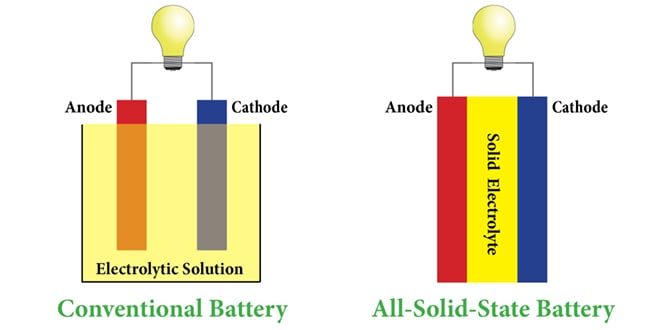Benefits of solid-state batteries
So far, we have usually use liquid batteries. Recently, scientists have come up with solid-state batteries. Let’s read on and see what is it!

Solid-state batteries: 4 benefits compared to liquid cells
With solid-state cells, you are left worried-free about replacing battery after each 2-3 years of using. Moreover, it must be more annoyed to replace the battery if you are using non-removable battery phones. In general, solid-state electrolyte is not as reactive as the liquid or gel cell. As a result, life spans of solid-state battery is longer. In addition, it is said that these batteries are safe for users. Even they are disrupted, they will not explosion or catching fire. One point that also worth considering is long-term-of-use smartphone batteries can lead to unstable hardware or broken. With solid-state batteries, smartphones and other gadgets could last a lot longer without needing a replacement cell.
Secondly, space saving is one of the basic advantages of solid-stage batteries. This characteristic of solid-state battery is the result of the substitution of large separator by a thin blockage. This blockage functions as short circuit preventer. In case of conventional liquid cell, the separators is 20-30 micron thickness. Meanwhile, solid-state battery comes in 3-4 micron thickness.
Thirdly, the increase in energy density of the battery which is double Li-on batteries’ energy capacity, is the basic advantage of solid-state batteries. Last but not least, solid-state electrolytes runs faster than liquid cells. According to the test, it is up to 6 times faster charging.
Solid-state batteries: wrap up and its future
In conclusion, four advantages of solid-state cells over liquid cells are potential space saving, energy density increase, long life span and faster charging time. However, scientists said that this battery still need some adjustment and scientists have to do more experiments to test the application of it. This means we need to wait for about five to six years more in order to see solid-state batteries to be available in the market.









